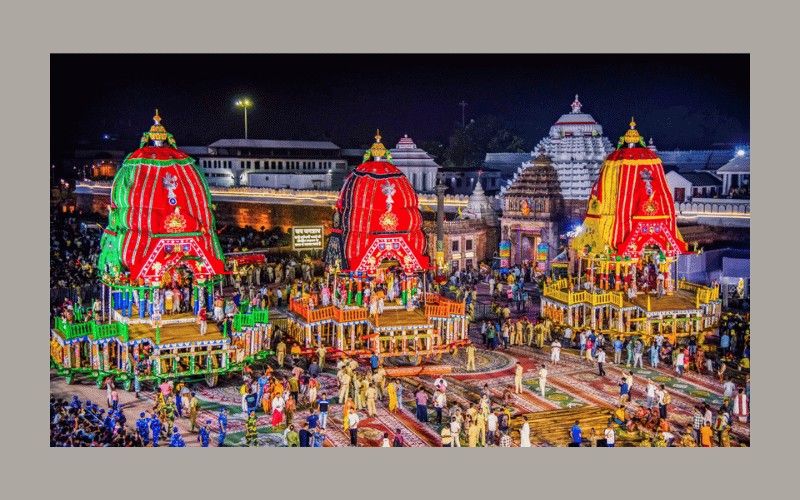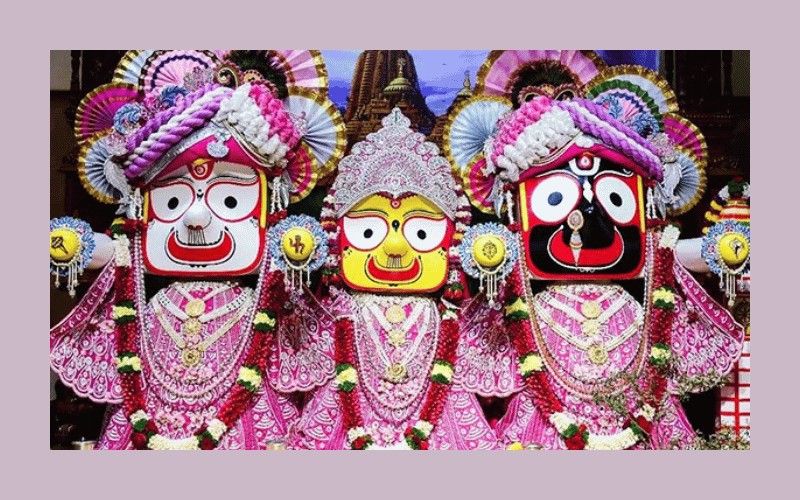Puri, a spiritual city located on the eastern Indian shore of Odisha, once again saw an influx of devotional spotlight over the world when the world-renowned Rath Yatra of Lord Jagannath was ushered in during June 2025. Famous for being marked with its greatness and whooping spiritual lures as well as its matchless cultural values, the festival attracted millions of followers worldwide. However, even as the service and the festivities are bound to be engraved in the memory, the 2025 Yatra is likely to be recalled as the stampede that tainted the procession. The Rath Yatra, which is an annual procession of the deities Lord Jagannath, Lord Balabhadra, and Devi Subhadra who travel to the main Jagannath Temple and the Gundicha Temple, is a testament to the innermost feelings of Hindu faith. The version of the event held this year, between June 27 and July 8, was characterized by a blend of traditional rites and contemporary issues of organization, which did not spare the abilities of administration, followers, and spiritual leaders.
The accident that brought the nation to shock was at Gundicha Temple, where an extreme number of crowds and heat caused a stampede, killing three pilgrims and injuring more than fifty others. The first reports attributed mismanagement of crowds and poor planning. Immediately after the tragedy, an immediate administrative response was effected. The Odisha government removed the Collector and Superintendent of Police at Puri and suspended important police personnel, namely the Deputy Commissioner of police and a police commandant. Chanchal Rana and Pinak Mishra came in as in-charge of the district, and their role is to maintain a safe and uninterrupted conclusion of the remaining days of the Yatra. Although the spiritual sanctity of the event was not affected, a great need to take better security measures was brought to focus.
The Sacred Temple and Its Living Legacy
The Jagannath Temple in Puri is not a building constructed out of ancient stone but an institution, full of divine energy and continuity of rituals. Set up in the 12th century in the reign of King Anantavarman Chodaganga Deva, the temple is a part of the four Char Dham pilgrimages, which are held sacred in Hinduism. It is a magnificent testament of religious dedication to Lord Jagannath, who is considered the God not only of this world, but of the whole of the Universe. The inner shrine of the temple, where people can enter only in case they are Hindus, is deemed to contain the wooden idols that are imbued with divine power. Such gods are not believed to be just a symbol but are regarded to be living beings that suffer diseases, sleep, and emerge in front of people according to a schedule of rites.
In the last year, the temple has been restructured to a great degree as part of the Shree Jagannath Heritage Corridor project. This was an ambitious project that sought to enhance pilgrim facilities and security, and preserve aesthetics in terms of spirituality. The temple is now surrounded by a 75-meter-wide corridor, which functions as a place to accommodate thousands of people and performs darshans more smoothly.
The Spiritual Timeline of Rath Yatra 2025
The voyage of the gods to the home and the Gundicha Temple, the home of the aunt, and then back again is not merely a procession, but it is a sacramental affair full of symbolism. It starts with Snana Purnima, the purification bath of the deity, which occurred on the 11th of June 2025. This is the first day of the ritual calendar of Rath Yatra. Those idols were raised in Snana Mandapa and washed with 108 pots of holy water. After this public bathing ritual, it is felt that the deities come down with illness and go into seclusion called Anavasara, which is observed between June 13 and June 26.
The deities are cared for until they are well again, in an enclosed space, away in shadows, unseen during Anavasara. The Alarnath Temple, a pilgrimage situated close to Puri, is also visited by devotees, as the deity will provide solace in the wait for Jagannath. The Gundicha Temple was cleansed on June 26 by the Gundicha Marjana ritual, in anticipation of the arrival of the divine guests. Then, on June 2,7, the big Rath Yatra started. A grand procession called Pahandi was performed, and the deities came out of the sanctum and were seated on their respective wooden chariots: Nandighosha with Lord Jagannath, Taladhwaja with Lord Balabhadra, and Darpadalana with Devi Subhadra.
The chariots are new ones constructed every year in sacred neem wood, and the pullers of the chariots are devotees who compete in the overwhelming display of piety and bonding of the community. When the majestic chariots were being passed through the streets of Puri, people could hear the chants of Jai Jagannath all over the city. The visuals remained active on July 1 as Hera Panchami commemorated that Goddess Lakshmi was not taken and her deity took the form of showing her dissatisfaction in being abandoned by paying a visit to the Gundicha Temple in the hope of receiving her company. The backwards journey, or the Bahuda Yatra, was on the 4th of July, when the main deities returned to the main temple. On July 5, the gods took part in the Suna Besha ritual, where they were covered with gold ornaments, and the spectacle was something that awed the faithful. On July 8, the Yatra ended with Niladri Bijay as the deities returned to their sanctum, completing the divine journey.

Legends and Mysteries of the Temple
The Jagannath Temple is not only a place of worship it is a museum of ancient myths and lingering mysteries. The most interesting of them is the legend of the third step of the temple Yamashila. It is believed that a person will be judged by deities when one steps over the threshold, as this is believed to be the domain of Yama, the god of death. It is also given as much importance by the devotees when leaving the sanctum, as the belief in karma and salvation is deep-rooted. Then there is the Chhera Pahara ritual in which the Gajapati king of Puri is seen sweeping the vicinity of the chariots using a golden broom to symbolize purity.
Probably, there can hardly be a more touching tale than that of Salabega, a Muslim poet who lived in the 17th century and was a devotee of Jagannath. Being refused in the temple because of his religion, Salabega expressed his love to the Lord in poetry and religion-less devotion. Up to date, it is assumed that the chariot of the Lord takes some moments before his memorial in the Rath Yatra, an untold cross-statement of participatory deity.
The Divine Cuisine: Mahaprasad
Experiencing the Mahaprasad or sacred food that is served to Lord Jagannath is an incomplete Puri trip. The kitchen of the temple is one of the biggest in the world, feeding thousands of people every day with the help of traditional firewood and traditional earthen pots. The food becomes Mahaprasad, which is said to be spiritually rich and blessed to the deities once they are offered to them. A routine given as free food among followers, it is not only a source of dietary food, but also something that reflects the main practice of the temple, which is harmony among people. The fare cuts across the social divide, and the entire people, irrespective of caste, creed, and financial status, sit together in the Anand Bazaar of the temple.
The Rath Yatra of 2025: Challenges and Highlights
The impressiveness of the Rath Yatra of 2025 was not only in rituals, but also in participation and preparation, which went along with it. The deployment consisted of more than 10,000 police officers, 44 platoons, and eight units of the Central Armed Police Force. More than 275 CCTV cameras having AI capabilities surveyed people in a crowd. Medical teams were put in strategic places, and drone surveillance was introduced. Irrespective of such contemporary taking care of these days, the tragic stampede showed the erratic nature of mass religious events.
A number of prominent personalities joined the Yatra scheduled for 2025. Gautam Adani and his wife Priti Adani took part in prasad seva during the entire period of this festival, and this is a custom where serving is regarded as the greatest form of devotion. Pilgrims came to Puri from all directions of India and the world, risking the heat, humidity, and the crowd to have a glimpse of the Lord on the chariot. Their dedication confirmed that the ritual did not lose any of its spiritual charm.
The Rath Yatra was not limited to the city of Puri only. ISKCON temples and Hindu communities in other parts of the world (we are talking about the world party) in cities such as London, New York, celebrated the festival with local chariot processions, ethnic cultural performances, and bhajans. Another similar event was organised in West Bengal and especially in Digha, and was a huge rally organised by the ISKCON-inspired movement. But in Odisha, the mother Puri Rath Yatra still retains unequalled religious validity and historical continuity.














